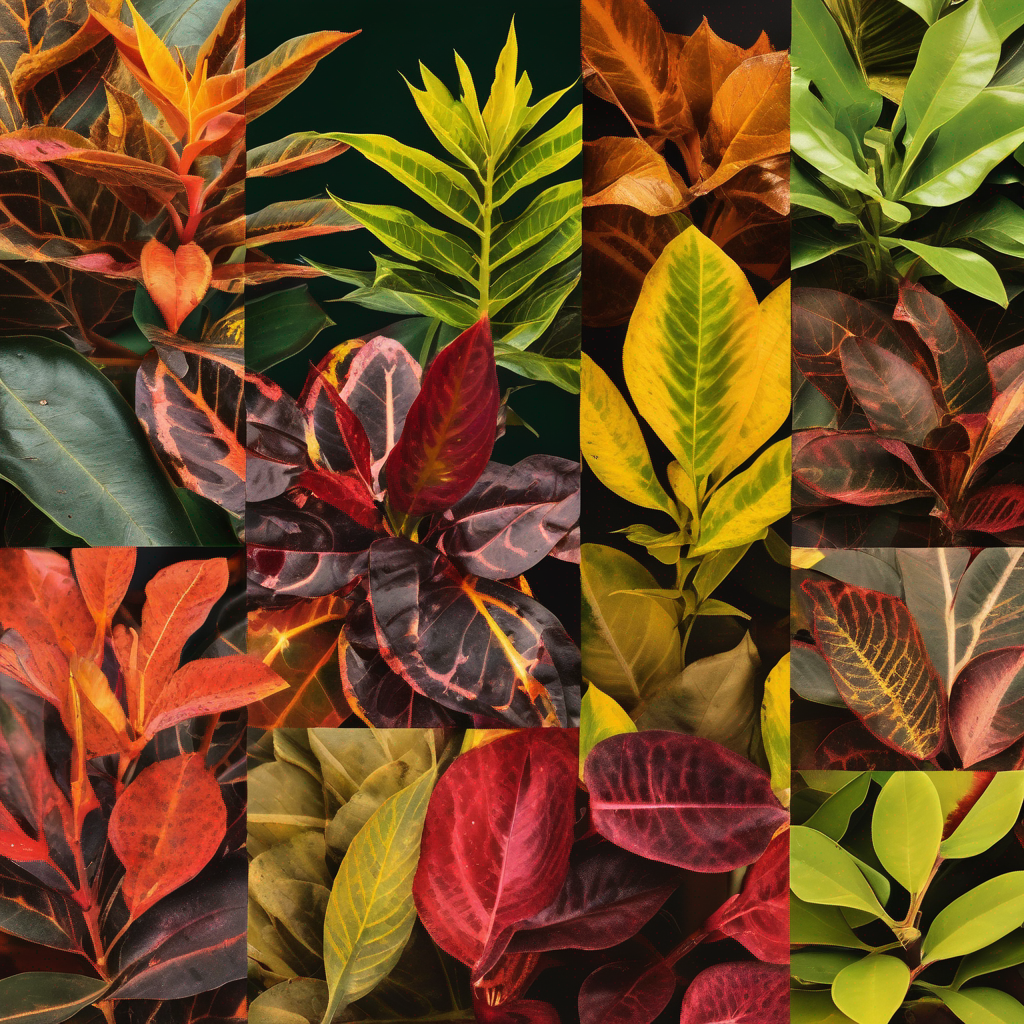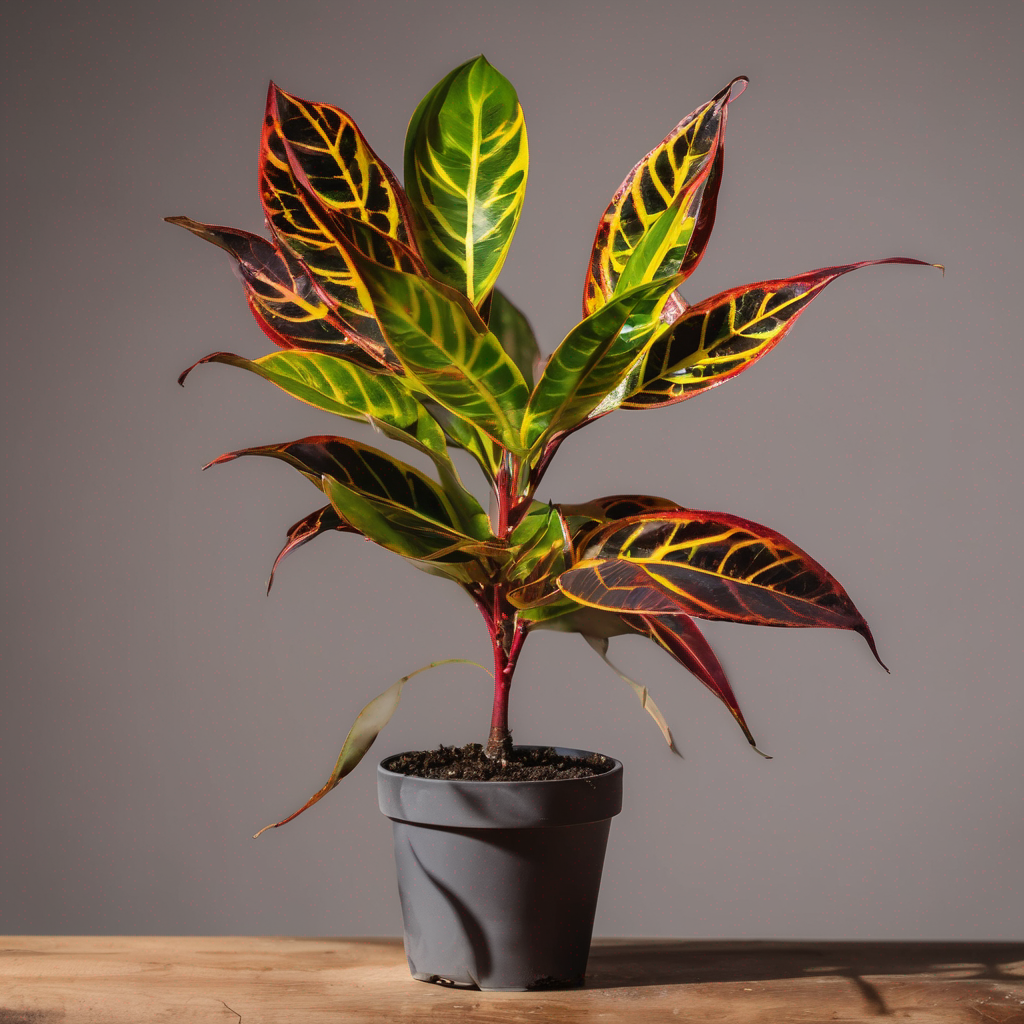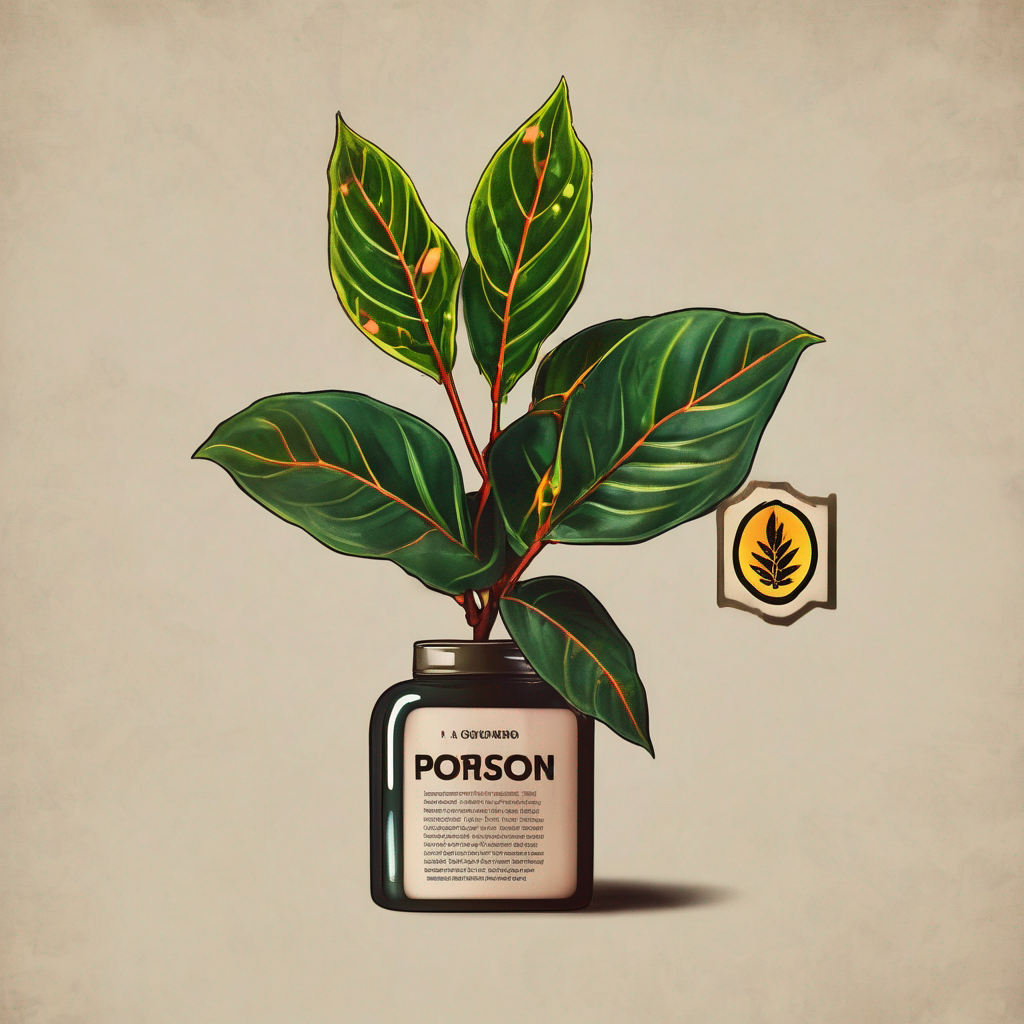
Introduction
Unveiling the vibrant spectrum of Croton varieties, this comprehensive guide invites you into the fascinating world of ornamental plants. With over 100 options to choose from, each boasting a unique character, color palette, and growth pattern, Crotons are a captivating addition to both indoor spaces and gardens. In this article, we delve into the details of some popular Croton varieties, offering insights into their characteristics and optimal care. Join us as we explore the lush diversity of Croton Petra, Mammy Croton, Gold Dust Croton, Eleanor Roosevelt Croton, Croton Mother and Daughter, Croton Zanzibar, and Bush On Fire Croton.
Croton Varieties:
- Croton Petra:
- With shield-like leaves in stunning red, orange, and yellow hues, Croton Petra is a favorite among ornamental plant enthusiasts.
- Originating from Southeast Asia, these varieties thrive in consistent temperatures between 60 to 85 degrees Fahrenheit.
- Ideal for rooms or gardens, they can grow up to an impressive four to five feet tall.
- Mammy Croton:
- Distinguished by its unique leaf shape, Mammy Croton boasts large, bent, and shiny leaves in an array of colors, including bright yellow, red, green, purple, and brown.
- Sensitive to cold temperatures, it’s advisable to bring Mammy Croton indoors when the weather cools down.
- Gold Dust Croton:
- Featuring dark green leaves speckled with golden yellow dots, Gold Dust Croton is not only visually striking but also low-maintenance and evergreen.
- Despite a slow growth process, these varieties can reach heights of 3-6 feet, making them an excellent choice for those seeking an easy-to-care-for ornamental plant.
- Eleanor Roosevelt Croton:
- Bred in 1920 by Henry Coppinger, this variety pays homage to the first lady of the United States.
- Characterized by wide, long leaves in a purplish-green color with golden yellow splatters, Eleanor Roosevelt Croton adds a touch of elegance to any space.
- Croton Mother and Daughter:
- Uniquely named and uniquely shaped, these varieties boast long, narrow leaves that end in spikes holding tiny leaflets.
- Dark green to dark purple leaves, adorned with yellow or ivory spots, make Croton Mother and Daughter the most exotic among Croton varieties.
- Croton Zanzibar:
- Resembling Eleanor Roosevelt in leaf structure, Croton Zanzibar features narrow leaves in shades of green, purple, red, yellow, and orange.
- With a grass-like texture, these varieties can grow up to 3-4 feet, serving as delightful decorative accents in homes with bright light.
- Bush On Fire Croton:
- Aptly named, Bush On Fire Croton mirrors the hues of flames with its long, dappled leaves in shades of red, orange, pink, and yellow.
- Whether indoors or outdoors, they thrive in vibrant colors and can grow to heights of 3-5 feet.
How to Grow Croton:
In tropical climates, Crotons are often planted indoors as ornamental plants, but they can also thrive outdoors. Choosing a variety that suits your local conditions is crucial. For instance, cold-tolerant varieties are suitable for colder regions, while those living in consistently warm climates can explore the full range of Croton varieties. The USDA hardiness zone for Crotons is 10 to 12.
To plant Croton, follow these steps:
- Prepare rich organic soil: Start by preparing nutrient-rich organic soil for optimal growth.
- Plant Croton: After choosing your preferred variety, plant the Croton and water the top 2 inches of soil. Allow it to dry before placing it in a permanent position.
- Choose a well-lit area: Crotons thrive in bright light, making a sunny windowsill an ideal spot. While they can tolerate moderate indoor light, they exhibit more prolific growth in bright outdoor light.
How to Care for Croton:

Despite their reputation for fussiness, Crotons can be successfully grown with adequate attention to their water and light needs. Follow these care tips:
- Watering: Ensure your Croton receives enough water regularly. Water when the top 2 inches of soil dries out or when new growth is observed.
- Avoid overwatering: Be cautious not to overwater, as this can lead to root rot. Adjust the watering frequency based on the plant’s needs.
- Temperature considerations: Keep Crotons away from drafts and cold temperatures below 60 degrees Fahrenheit to prevent leaf loss or plant death.
- Fertilization: Fertilize Croton plants a month after planting, following the instructions on the packaging. This nourishes the plants and promotes healthy growth.
- Pruning: Prevent damage by pruning, focusing on fallen lower leaves. Pruning can encourage thicker, fresher growth. Cut branches or stems at the desired height to shape the plant.
Note: Crotons belong to the Poinsettia family, characterized by a sticky white sap that drips from pruning cuts. Use gloves during pruning to protect your hands.
Propagating Your Croton Plants

Expanding your collection of vibrant Croton varieties is an exciting venture, and propagation offers a rewarding way to share the beauty of these ornamental plants. While each Croton variety may have its unique characteristics, the general process of propagation remains consistent.
1. Propagation Methods:
- Cuttings: Propagation through cuttings is the most common and effective method for Crotons. Select a healthy, non-flowering stem with at least three leaves, and make a clean cut just below a leaf node. Remove any excess leaves to reduce moisture loss.
- Air Layering: This method involves creating a small incision in the stem, encouraging root development before detaching and planting the rooted section. While slightly more complex, air layering can yield strong, well-established plants.
2. Ideal Time for Propagation:
- The best time to propagate Crotons is during the growing season, typically in spring or early summer. This ensures that the plant has ample energy for root development.
3. Preparing the Cuttings:
- Use Rooting Hormone: Dip the cut end of the Croton cutting into rooting hormone to stimulate root growth. This enhances the chances of successful propagation.
- Choose a Healthy Stem: Select a stem with no signs of disease or pests. The healthier the cutting, the better its chances of successful root development.
4. Planting the Cuttings:
- Soil Mix: Prepare a well-draining soil mix. A combination of potting soil, perlite, and sand works well for Croton cuttings.
- Planting Depth: Insert the cutting into the soil, burying at least one node. Gently firm the soil around the cutting to provide stability.
5. Care during Root Development:
- Maintain Humidity: Cover the cuttings with a plastic bag or place them in a humidity dome to create a humid environment, promoting root development.
- Indirect Light: Place the cuttings in an area with bright, indirect light. Avoid direct sunlight, as it can stress the developing roots.
6. Rooting Progress:
- Patience is Key: It may take several weeks for the cuttings to develop roots. Monitor the progress by gently tugging on the cutting; resistance indicates the presence of roots.
7. Transplanting Rooted Cuttings:
- Gradual Transition: Once the cuttings have well-established roots, gradually acclimate them to their new environment by exposing them to slightly longer periods of direct sunlight.
- Potting Up: Transplant the rooted cuttings into larger pots filled with a well-balanced potting mix. This provides the young plants with the nutrients needed for continued growth.
8. General Care for Propagated Crotons:
- Watering: Maintain consistent moisture, ensuring the soil remains slightly damp but not waterlogged.
- Gradual Introduction to Sunlight: Transition the propagated plants to brighter light gradually to avoid shock.
- Fertilization: Introduce a diluted, balanced fertilizer during the growing season to support healthy growth.
By following these steps, you can multiply your Croton collection, creating an enchanting array of colors and shapes. Propagation not only allows you to enjoy more of these stunning plants but also presents an opportunity to share the beauty of Crotons with fellow enthusiasts. Experiment with different varieties and methods to find the approach that suits your preferences and conditions, and watch as your Croton garden flourishes.
Conclusion

In conclusion, the world of Croton varieties is a breathtaking tapestry of colors, shapes, and sizes. While these ornamental plants add aesthetic appeal to indoor and outdoor spaces, it’s essential to exercise caution due to their poisonous nature. Crotons can cause vomiting, diarrhea, and stomach discomfort if consumed in large quantities, posing a similar risk to pets. When planting and caring for these exquisite plants, pay careful attention to the sap to avoid staining and potential skin irritation. Embrace the beauty of Crotons responsibly, and you’ll be rewarded with a stunning and vibrant addition to your botanical collection.

Cat-Friendly Gardening: Creating a Safe Haven for Your Feline Friends
Table of Contents Introduction Hey there, fellow feline enthusiasts! 🐾 Welcome to a space where your garden becomes not just a patch of green but

From Lilies to Sago Palms: Protect Your Cat from These 10 Toxic Plants
Table of Contents Introduction: Keeping Your Furry Friend Safe from Toxic Plants Hey there, fellow cat lovers! We all know our feline companions can be

Cat Nutrition 101: Decoding Labels & Essential Nutrients A-Z!
Table of Contents Introduction As a cat owner, you want nothing but the best for your furry feline friend. And that includes providing them with
